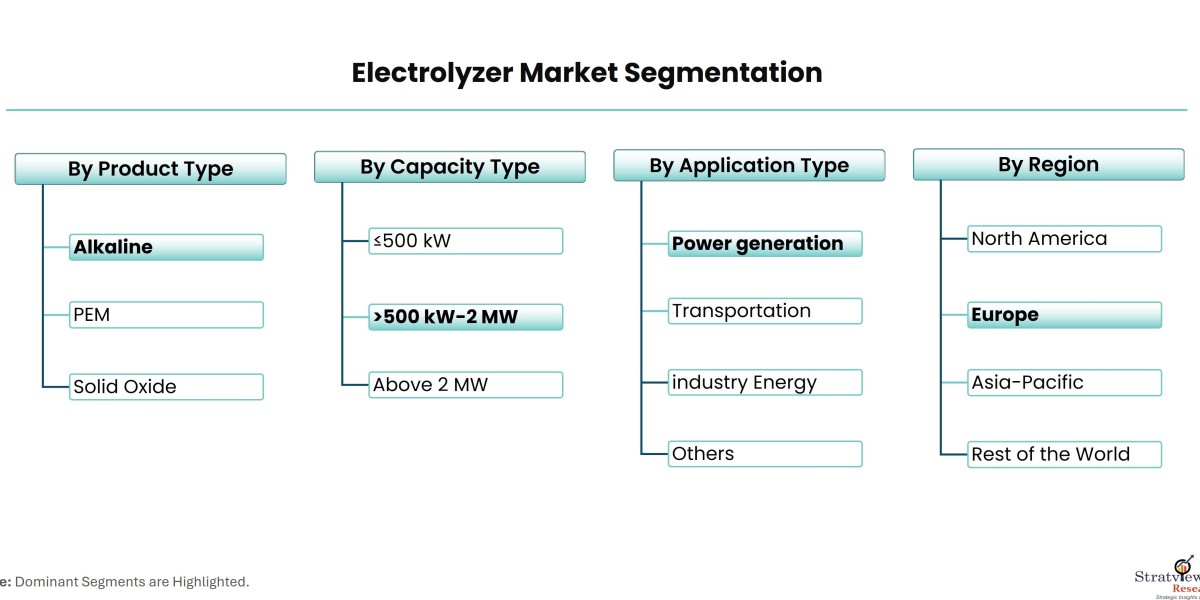The electrolyzer market is experiencing rapid growth, driven by the increasing demand for clean and sustainable energy solutions. Electrolyzers play a crucial role in the production of hydrogen, which is seen as a key element in the transition towards a low-carbon economy. This article explores the opportunities and challenges presented by the rapid growth of the electrolyzer market.
According to Stratview Research, the electrolyzer market was estimated at USD 0.3 billion in 2022 and is likely to grow at a CAGR of 97.16% during 2023-2028 to reach USD 17.57 billion in 2028.
Understanding Electrolyzers
Electrolyzers are devices that use electricity to split water (H2O) into hydrogen (H2) and oxygen (O2) through the process of electrolysis. The hydrogen produced can be used as a clean energy carrier in various sectors, including transportation, industry, and power generation. Electrolyzers are categorized into different types based on their technology, including alkaline electrolyzers, proton exchange membrane (PEM) electrolyzers, and solid oxide electrolyzers.
Opportunities in the Electrolyzer Market
The electrolyzer market presents numerous opportunities for growth and innovation:
1. Clean Energy Production: Electrolyzers enable the production of green hydrogen using renewable electricity sources such as wind and solar. Green hydrogen can be stored and used as a clean energy source, helping to decarbonize hard-to-abate sectors like heavy industry and transportation.
2. Renewable Integration: Electrolyzers support the integration of renewable energy into the grid by providing a means to store excess energy when demand is low and release it when demand is high. This helps to stabilize the grid and maximize the utilization of renewable resources.
3. Industrial Applications: Hydrogen produced by electrolyzers can be used in various industrial applications, including ammonia production, methanol production, and refineries. These applications can benefit from low-cost, low-carbon hydrogen, reducing greenhouse gas emissions.
4. Fuel Cells and Transportation: Hydrogen produced by electrolyzers can be used in fuel cells to generate electricity for electric vehicles, buses, trucks, and trains. This provides a zero-emission alternative to fossil fuels and helps to reduce air pollution in urban areas.
5. Policy Support: Governments around the world are implementing policies and incentives to support the deployment of electrolyzers and the production of hydrogen. This includes subsidies, grants, tax incentives, and regulatory frameworks aimed at promoting the development of a hydrogen economy.
Challenges in the Electrolyzer Market
While the electrolyzer market presents significant opportunities, several challenges need to be addressed to fully realize its potential:
1. Cost Reduction: The cost of electrolyzers, particularly PEM electrolyzers, remains a barrier to widespread adoption. Innovations in materials, manufacturing processes, and economies of scale are needed to reduce costs and improve competitiveness.
2. Efficiency Improvements: Electrolyzers have lower efficiency compared to other energy conversion technologies. Improving the efficiency of electrolysis processes will reduce energy consumption and improve the economics of hydrogen production.
3. Infrastructure Development: The deployment of electrolyzers requires the development of hydrogen infrastructure, including storage, distribution, and refueling stations. This infrastructure build-out is crucial to support the growth of the hydrogen economy.
4. Scaling Up Production: Scaling up electrolyzer production to meet growing demand requires investment in manufacturing capacity and supply chain optimization. This will help to reduce lead times and ensure the availability of electrolyzer systems.
5. Technological Development: Continued research and development are needed to advance electrolyzer technologies and address technical challenges, such as durability, reliability, and operating flexibility.
Conclusion
In conclusion, the rapid growth of the electrolyzer market presents significant opportunities for clean energy production, industrial applications, and transportation. However, addressing challenges such as cost reduction, efficiency improvements, infrastructure development, scaling up production, and technological development will be crucial to realizing the full potential of electrolyzers. With continued innovation and supportive policies, electrolyzers can play a key role in the transition to a sustainable energy future, contributing to global efforts to reduce greenhouse gas emissions and mitigate climate change.








